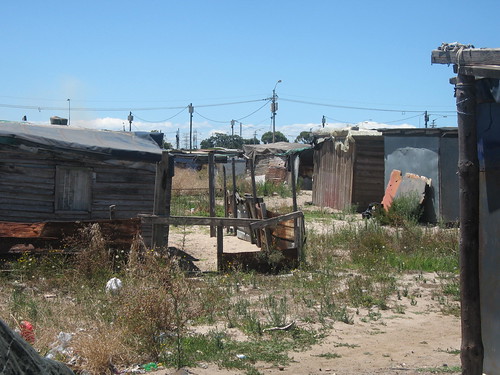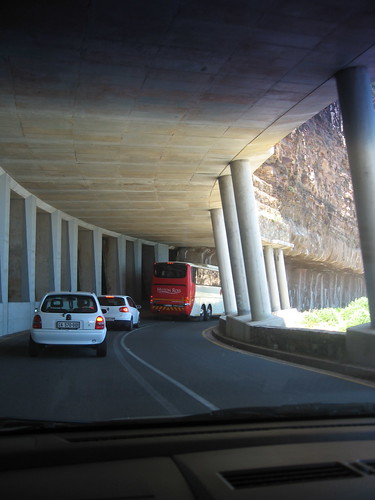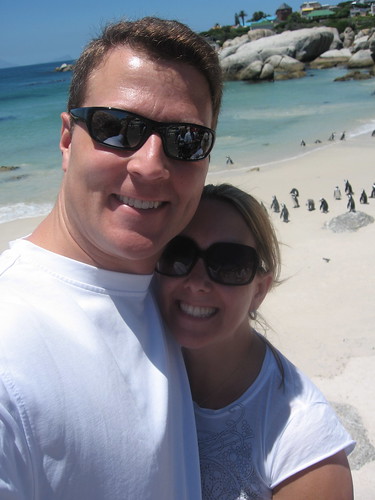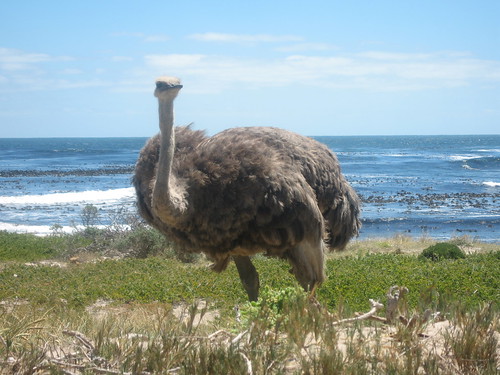
Our first goal was to see the Castle of Good Hope, a former British military fortification turned military history museum. During the Changing of the Guard, we witnessed what turned out to be the smallest cannon we've ever seen being fired. It might defend agains pigeons, but not much else. It was odd to be in a very European castle in Africa; I'm not sure anything similar exists on the continent.
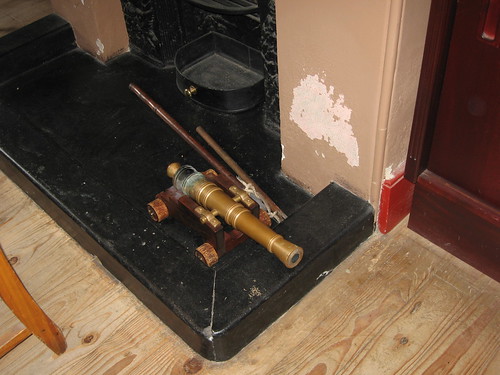
Next, we walked over to the District Six Museum , which was first class. It put me much in mind of the National Civil Rights musem in Memphis, Tennessee, in style and content (if not size -- it's actually quite small). The original District Six residents, roughly 60,000 of them, had been forcibly evicted in the 1970s by the national and city governments in a blatantly and unapologetically racist move. The museum chronicles the lifestyle and culture of the former District Six, and presents a history of the removal and just-beginning re-population aof the area by some of the original residents. I believe all the volunteers and emplyees at the musem are former residents.
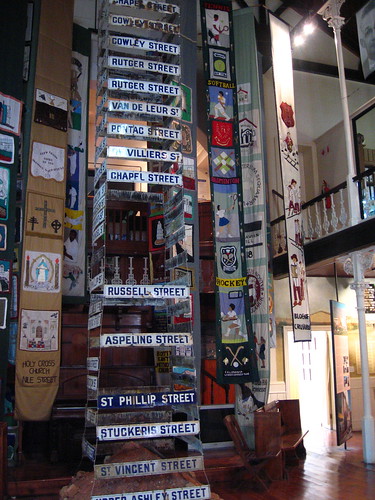
I have to say that the U.S. isn't always dramatically better. Though not as broad in scope or overtly racist in nature, California's Ellis Act evictions are not entirely dissimilar. Glass houses, stones, you know the saying. [Side note: I heard something about some other U.S city's historic forced evictions on NPR the other day, but can't remember the city and can't find the reference now -- anyone else know hear the article?]
We'd been previously introduced via email to some friends-of-friends that lived in Cape Town, Brett and Johann. We'd coordinated by phone once we arrived, and arranged to go out to dinner with them. They picked us up and we drove north of the city to the suburb of Blouberg, which to my mind looked like any modern suburb anywhere and was not particularly interesting in and of itself. The saving grace for Blouberg was the view; located at the closest land point to Robben Island, Mandela's home for much of his imprisonment, Blouberg has the postcard-standard view of Cape Town across the bay, with Table Mountain framing the city.
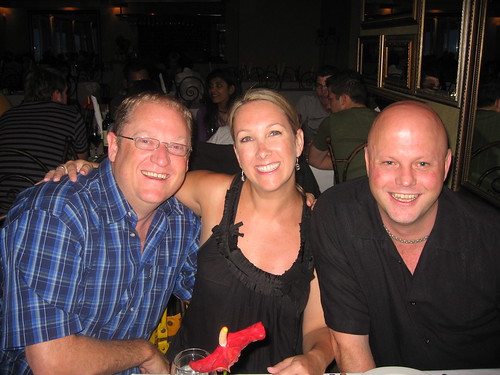
Johann took the next morning off from work to drive us around a bit, which was both unexpected and great for us. To top it off, he brought along a bottle of 20-year South African brandy for me to try, nicely chilled in a small cooler. Now that's a way to start the day!
Johann drove us up the flanks of Cape Town's Signal Hill to see the Noon Gun. Now *that* was a real cannon! The wind was blowing incredibly hard; in fact, Table Mountain was closed (again) because of it. We didn't at first think the gun would be all that interesting, but in fact all of us are glad we went, especially since it was something we'd probably have skipped if Johann hadn't wanted to take us. I couldn't believe how loud the thing was!

We spent some time wandering through the BoKapp Muslim neighborhood, which was quiet as many stores and restaurants were still cosed for the holiday week.
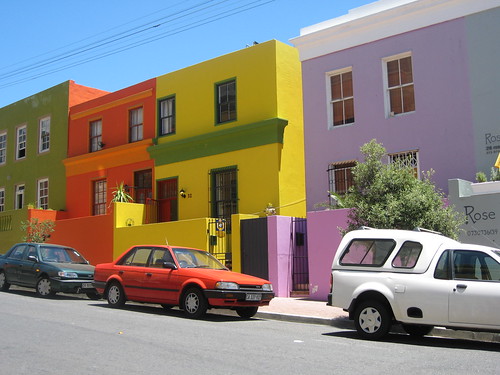 We also shopped and ate on Long Street, which surprisingly was reminiscent of portions of New Orleans.
We also shopped and ate on Long Street, which surprisingly was reminiscent of portions of New Orleans.We had to stop in to a Cuban Bar! Yes, it was kind of a Disney-fied Cuba, but still.
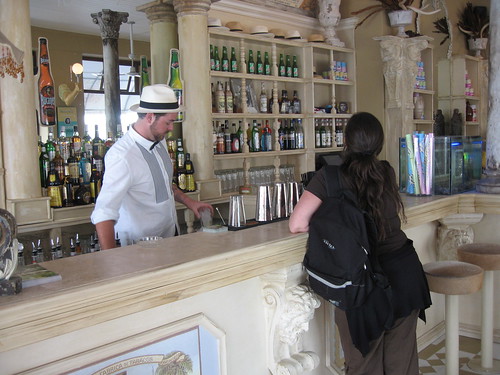
The following day we went on a tour of Langa, which depending on your standpoint and definitions is a township, community, neighborhood, or suburb. Regardless of terminology, the place was completely different than anywhere else we'd been, and probably more indicative of how far too many people live that anything else we'd seen on the trip.
To start the Langa tour we stopped in the Guga S'Thebe cultural center , which is kind of a artisan showcase, historical resource, and a community center for kids. We were fortunate to have several of the kids demonstrate a traditional gumboot dance . Yes, it's a show for tourists, but it had the advantage of being culturally relevant o the poerformers as well as being something they not only enjoyed doing, but were obviously taking pride in doing well.
As far as the actual Langa apartments, shacks, houses and other living quarters -- all were small, but those that we saw were neatly-maintained by their occupants. I suppose there's no room for a slob when sharing a place that small. For all the pride that people took in their individual homes, no matter how small or fragile, and their own personal appearance, which was never less than immaculate, the streets and alleys were another matter. Kids walked around broken glass and other garbage on bare feet, and everyone seemed to ignore the garbage cans in favor of the open grounds between the houses.

The saddest thing, in my mind, is that even in post apartheid South Africa, people are still living in those conditions. In many cases it's not because they're incredibly poor (though that's also a huge problem), but that no one will sell to them in the more-desireable parts of town. Students, doctors, lawyers, teachers, all were forced to live in housing that rivals the worst slums I've seen anywhere, even though many were holding down decent jobs and some even owned cars.
